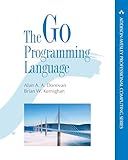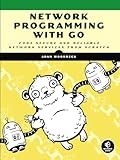Best String Formatting Guides in Go to Buy in January 2026

Go Programming Language, The (Addison-Wesley Professional Computing Series)



Learning Go: An Idiomatic Approach to Real-World Go Programming



Mastering Go: Leverage Go's expertise for advanced utilities, empowering you to develop professional software



100 Go Mistakes and How to Avoid Them



Network Programming with Go: Code Secure and Reliable Network Services from Scratch



Learn Concurrent Programming with Go


In Go, there are multiple ways to format strings and output the desired values. Here are some techniques commonly used:
- Using fmt.Printf: The fmt.Printf function allows you to format strings similar to C's printf. You can specify placeholders (verbs) within the string and provide corresponding arguments to substitute for those placeholders. For example: age := 25 fmt.Printf("I am %d years old\n", age) Output: "I am 25 years old"
- Using fmt.Sprintf: The fmt.Sprintf function works similarly to fmt.Printf, but instead of printing the formatted string, it returns the formatted string as a value. This is useful if you want to store the formatted string for further use. For example: name := "John" greeting := fmt.Sprintf("Hello, %s!", name) fmt.Println(greeting) Output: "Hello, John!"
- Using fmt.Println: If you want to output a simple string without any formatting requirements, you can use fmt.Println. It automatically adds a new line after printing the provided string. For example: fmt.Println("This is a simple output") Output: "This is a simple output"
- Using strconv.Itoa: If you need to convert a numeric value to a string, you can use the strconv.Itoa function. It converts an integer to its decimal string representation. For example: num := 42 str := strconv.Itoa(num) fmt.Printf("The number is %s\n", str) Output: "The number is 42"
These are just some of the ways to format strings and output values in Go. The fmt package provides many more formatting options and verbs to handle different data types and formatting scenarios.
What are the available format verbs for string formatting in Go?
In Go, the available format verbs for string formatting are:
- %v: default format, it represents the value in its default format.
- %T: represents the type of the value.
- %t: represents the boolean value (true or false).
- %d: represents an integer value (decimal).
- %b: represents an integer value in binary format.
- %o: represents an integer value in octal format.
- %x: represents an integer value in lowercase hexadecimal format (a-f).
- %X: represents an integer value in uppercase hexadecimal format (A-F).
- %f: represents a floating-point number.
- %e: represents a floating-point number in scientific notation (small 'e').
- %E: represents a floating-point number in scientific notation (capital 'E').
- %g: represents a floating-point number in either decimal or scientific notation.
- %s: represents a string value.
- %q: represents a quoted string value.
Example usage:
value := 42 fmt.Printf("Value: %v\n", value) fmt.Printf("Type: %T\n", value)
isTrue := true fmt.Printf("Is True? %t\n", isTrue)
number := 3.14 fmt.Printf("Number: %f\n", number) fmt.Printf("Scientific Number: %e\n", number)
text := "Hello, Go!" fmt.Printf("Text: %s\n", text) fmt.Printf("Quoted Text: %q\n", text)
Output:
Value: 42 Type: int Is True? true Number: 3.140000 Scientific Number: 3.140000e+00 Text: Hello, Go! Quoted Text: "Hello, Go!"
How to split a string into substrings in Go?
In Go, you can split a string into substrings using the strings package. The strings package provides the Split() function, which you can use to split a string based on a delimiter.
Here's an example of splitting a string into substrings in Go:
package main
import ( "fmt" "strings" )
func main() { str := "Hello, World!" substrings := strings.Split(str, ", ")
for \_, substr := range substrings {
fmt.Println(substr)
}
}
Output:
Hello World!
In the example above, we have defined a string str that contains "Hello, World!". We then use the Split() function from the strings package to split the string into substrings. The first argument to Split() is the string to be split, and the second argument is the delimiter on which to split the string.
The Split() function returns a slice of substrings. We then use a for loop to iterate over each substring and print it.
Note that if the delimiter is not found in the string, the Split() function will return a slice containing the original string as the only element.
How to format a float as a string in scientific notation in Go?
To format a float as a string in scientific notation in Go, you can use the fmt package along with the %e format verb. Here's an example:
package main
import ( "fmt" )
func main() { number := 123456.789
// Format float in scientific notation
str := fmt.Sprintf("%e", number)
fmt.Println(str) // Output: 1.234568e+05
}
In the above example, fmt.Sprintf("%e", number) formats the number in scientific notation and returns it as a string. The resulting string "1.234568e+05" represents number in the scientific notation format.
How to format a float as a string with fixed decimal precision in Go?
To format a float as a string with fixed decimal precision in Go, you can use the fmt.Sprintf function with a format specifier.
Here's an example:
package main
import ( "fmt" )
func main() { number := 3.14159 precision := 2
// Format the float with fixed decimal precision using fmt.Sprintf
str := fmt.Sprintf("%.\*f", precision, number)
fmt.Println(str) // Output: 3.14
}
In this example, the fmt.Sprintf function is used to format the float number with the format specifier "%.*f". The precision variable is passed as an argument to the format specifier, which specifies the desired number of decimal places.
The * before the f in the format specifier allows the precision to be specified using an argument (.*) rather than a constant value. This allows you to easily change the precision value by modifying the precision variable.
The resulting formatted string with the specified precision is stored in the str variable and printed to the console.
How to format strings for JSON output in Go?
In Go, you can format strings for JSON output by using the encoding/json package. Here's an example of how to do it:
- Create a struct that represents the JSON object. The field names of the struct should match the keys in the JSON object:
type Person struct { Name string `json:"name"` Age int `json:"age"` }
- Create an instance of the struct with the desired data:
person := Person{ Name: "John Doe", Age: 30, }
- Use the json.Marshal function to convert the struct into a JSON string:
jsonData, err := json.Marshal(person) if err != nil { fmt.Println("Error marshaling JSON:", err) return }
- Print or use the JSON string as needed:
fmt.Println(string(jsonData)) // Output: {"name":"John Doe","age":30}
In this example, the json.Marshal function automatically formats the struct fields as a JSON object. The json:"fieldname" tags are used to specify the desired JSON key names.
